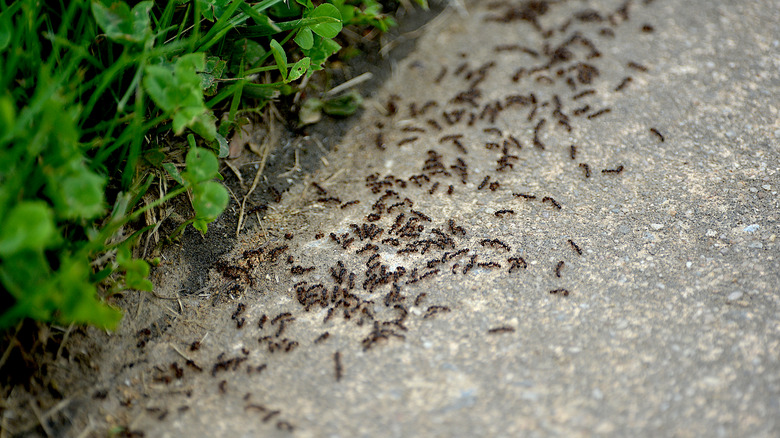How To Repel Nuisance Pests In The Garden With Fresh-Smelling Lavender
You walk out to enjoy the garden, but within minutes, you're swatting at flies and flicking ants off your arm. It's more than just a minor annoyance. Flies bring germs and diseases wherever they land, and ants seem to find anything edible the second you drop it. Once they've locked onto a trail, they don't stop. But breaking that pattern early can make a big difference, and that's where lavender can really help.
This fragrant plant produces essential oils rich in linalool and linalyl acetate — natural compounds that repel a wide range of insects. While the scent is pleasant to humans, it interferes with how pests navigate using smell. Lavender can disrupt the scent trails ants rely on to find food and mask the odors that usually attract flies, making it harder for them to zero in on their target. Many gardeners also use lavender oil to repel ants indoors, especially near baseboards, windows, and pantry shelves. It may even help keep moths, mosquitoes, and wasps at bay, especially when planted near entry points or sitting areas.
But even with all that going for it, lavender has its limits. It won't wipe out a colony or clear a swarm. What it can do is create an environment that pests want to avoid, especially when the problem is still small. If ants are just starting to show up near your herbs or flies are hovering by the back door, a few well-placed lavender plants or sprays can make a real difference. For larger infestations, though, it's best to call in professional pest control before things get out of hand.
How to use lavender to repel flies and ants
Lavender is easy to work with, and there are several effective ways to use it to get rid of ants and flies in your garden or around your home. One of the most reliable options is to grow it. Plant lavender along garden borders, near doors, windows, patios, or vegetable beds to create a strong scent barrier. The aroma helps mask the smells that attract pests, making it harder for them to find food or follow scent trails. This popular purple plant grows best in sunny, well-drained spots, and once established, it needs very little care.
You can also make a simple lavender spray to use on surfaces. In a small bowl, mix about 2 tablespoons of water with a few drops of lavender essential oil. Stir the mixture for at least 30 seconds so the oil and water blend as evenly as possible. Once combined, pour it into a clean spray bottle with a tight-fitting lid. Shake the bottle before each use and spray this mixture around entry points, on windowsills, baseboards, garbage bins, and anywhere you've seen ants or flies.
Another option is to use lavender oil or dried lavender as a passive repellent. Soak cotton balls in lavender oil and place them in corners, under sinks, near cracks, or in garden sheds. For longer-lasting coverage, fill small fabric sachets with dried lavender and tuck them into drawers, under cushions, or near the pantry. However, you will have to refresh cotton balls or oil lines once a week to maintain their effect.

